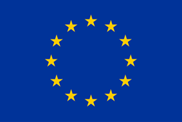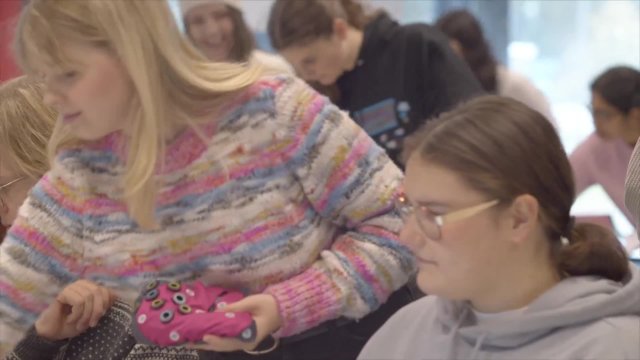In a unique experiment, researchers at the University of Twente conducted brain measurements on 20 students at the same time. During a one-hour lecture that alternated between passive and interactive, the researchers wanted to learn more about changes in students' concentration during lectures. This could lead to wearable technology that tells the lecturer that students' attention is waning.
Many people recognise it: Your eyelids get heavy during a boring lecture, a presentation or prolonged staring at a screen in a control room. When computer systems fail, they probably show an error message. But there is no popup when the people in a control room or lecture hall are losing attention. This is why researchers at the University of Twente developed a technology that simultaneously measures the alertness of several people. With this hyperscanning technology lecturers or team leaders can react immediately when attention is waning.
Large experiment
This technology, which uses so-called Brain-Computer Interfaces or BCI, has never been used on this scale before. An example of a BCI is a headset that measures your brain activity. "You can already control computer games with a BCI, for example", explains Rob van der Lubbe, one of the researchers. "But our technology needs to give direct feedback on alertness from multiple people at the same time, which is not possible at the moment." In the future, this could lead to better performance in workplaces where sustained alertness is crucial. "As soon as attention in a lecture hall slackens, a lecturer can make the lecture more interactive and see if that indeed has an effect."
Twenty students were simultaneously given a special cap that measured two different signals of brain activity: EEG and fNIRS. ANTNeuro and Artinis Medical Systems developed the cap together with the University of Twente. "Brain measurements of alertness have been done before, but never on so many people at the same time," says researcher Max Slutter, "but getting all the caps working at the same time required a huge effort from a large team."
The 20 students were given an hour-long lesson that alternated between passive and interactive parts. This was done in 15-minute blocks. A block with a standard lecture without interaction was alternated with a more interactive block with discussion, a quiz and lots of interaction. Because the researchers continuously measured brain activity in two ways, they did not need to interrupt the lecture to have an idea of alertness. In that case, you would actually already have an immediate impact on alertness.
Is alertness contagious?
"We know that students pay better attention during interactive lectures, but for us, it is interesting whether you see that reflected in brain activity," Slutter says. The researchers not only look at the brain measurements of individual students but also try to correlate them. "We are investigating whether alertness is contagious. If the person next to you loses attention, does that affect you? And conversely, if a person next to you is more alert, do you become more alert?", Slutter wonders. "We are extremely satisfied that we managed to successfully collect data from all 20 participants. From the first results, it seems that the students were indeed more alert during the interactive lecture," Slutter concludes.
More information
Max Slutter is a researcher in the Department of Data Management & Biometrics (DMB; Faculty of EEMCS). He set up the experiment together with Dorvanique Cocks and Tobias Merkelbach under the supervision of Dr. Mannes Poel and Dr. Rob van der Lubbe. The experiment is part of the EFRO ALERT research project. The special caps that simultaneously measure EEG and fNIRS were co-developed by ANTNeuro and Artinis Medical Systems. Furthermore, the research project collaborates with the companies Thales Netherlands and Noldus Information Technology. The experiments for this project are conducted within the University of Twente's BMS Lab.
 This project was co-funded by the European Union.
This project was co-funded by the European Union.






